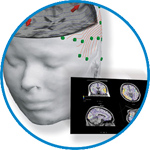- Home
- About ANT
-
Products

asa
asa is a highly flexible EEG/ERP and MEG analysis package with a variety of source reconstruction, signal analysis and MRI processing features.
.jpg)
eego mylab
The new frontier in multimodal brain research. With up to 16 kHz sampling rate, 256 EEG channels and unique software features, eego mylab gives you an unprecedented in-depth understanding of the human brain.

eego sports
eego sports offers complete freedom to collect high-density EEG data, bipolar EMG signals, and a variety of physiological sensor data, wherever and whenever required, with publish quality data in less than 15 minutes!

waveguard net
The waveguard net sets a new standard for research applications requiring high-density EEG data acquisition with quick preparation time, high flexibility, and subject comfort.

visor2
Our new and upgraded visor2 solutions integrate all the latest technologies for navigated rTMS, dual-coil navigation support, EEG-TMS recordings and pre-surgical evaluation for the highest quality in research and clinical procedures.

powerMAG ANT
The PowerMAG ANT 100 rTMS stimulator is designed for the specific needs of high-end TMS applications. Powerful high-frequency TMS as well as high precise single pulse and repetitive pulse protocols are combined in one single device.

xensor
xensor offers the solution for digitization of 3D electrode positions. xensor takes care of the whole procedure; it records, visualizes and stores positions acquired with a dedicated digitizer.

waveguard original
waveguard original is the cap solution for EEG measurements compatible with fMRI, MEG and TMS system. Use of active shielding guarantees performance in even the most demanding environments.

waveguard connect
waveguard connect EEG caps are a perfect match for hospitals and institutes aiming at reliable EEG, maximum uptime and great patient comfort! For optimal signal quality, the electrodes are made of pure, solid tin.

waveguard touch
waveguard touch is a dry electrode EEG cap. The unique Ag/AgCl coated soft polymer electrodes provide stable, research-grade EEG signals while maintaining subject comfort. The combination of these innovative dry electrodes and the industry-leading waveguard cap makes waveguard touch the best solution for dry EEG.

smartmove
smartmove allows planning of a complete TMS session ahead by defining stimulation sites based on anatomical MRI information and functional information like fMRI, PET or EEG/MEG.
Stay - References
- Support
- Events
- News
- Contact Us
You are here
Neonatal EEG at scalp is focal and implies high skull conductivity in realistic neonatal head models
Neonatal EEG at scalp is focal and implies high skull conductivity in realistic neonatal head models
The potential improvements in spatial resolution of neonatal EEG used in source localization have been challenged by the insufficiencies in realistic neonatal head models. Our present study aimed at using empirical methods to indirectly estimate skull conductivity; the model parameter that is known to significantly affect the behavior of newborn scalp EEG and cause it to be markedly different from that of an adult. To this end, we used 64 channel EEG recordings to study the spatial specificity of scalp EEG by assessing the spatial decays in focal transients using both amplitudes and between-channels linear correlations. The findings showed that these amplitudes and correlations decay within few centimeters from the reference channel/electrode, and that the nature of the decay is independent of the scalp area. This decay in newborn infants was found to be approximately three times faster than the corresponding decay in adult EEG analyzed from a set of 256 channel recordings. We then generated realistic head models using both finite and boundary element methods along with a manually segmented magnetic resonance images to study the spatial decays of scalp potentials produced by single dipole in the cortex. By comparing the spatial decays due to real and simulated EEG for different skull conductivities (from 0.003 to 0.3 S/m), we showed that a close match between the empirical and simulated decays was obtained when the selected scull conductivity for newborn was around 0.06–0.2 S/m. This is over an order of magnitude higher than the currently used values in adult head modeling.
The results also showed that the neonatal scalp EEG is less smeared than that of an adult and this characteristic is the same across the entire scalp, including the fontanel region. These results indicate that a focal cortical activity is generally only registered by electrodes within few centimeters from the source. Hence, the conventional 10 to 20 channel neonatal EEG acquisition systems give a significantly spatially under sampled scalp EEG and may, consequently, give distorted pictures of focal brain activities. Such spatial specificity can only be reconciled by appreciating the anatomy of the neonatal head, especially the still unossified skull structure that needs to be modeled with higher conductivities than conventionally used in the adults.

 Read more
Read more.jpg)




